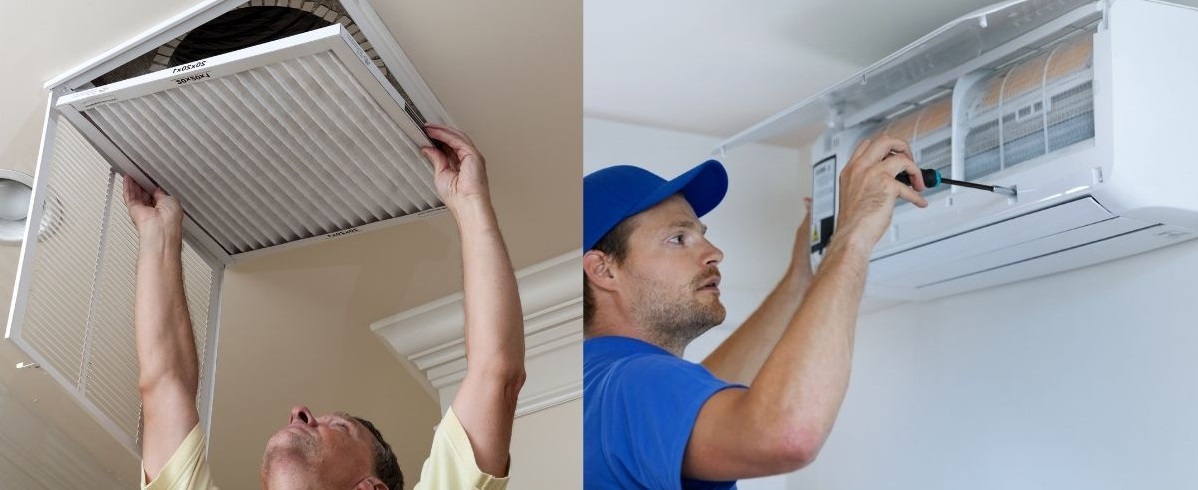
Making your home comfortable depends mostly on choosing the right climate control system. Two popular options from the many available ones truly cut through the noise: central air conditioning and mini-split systems. Each has advantages and disadvantages. Hence, it is essential to understand their differences before making a choice. We will explore both systems, helping you to decide which one fits your home most.
A Brief on Central Air Conditioning Control:
Central air conditioning is a classic cooling technology that spreads cool air around your home through ducting. It comprises an indoor unit (the air handler) and an outdoor unit (the compressor). The system pulls in heated air from your home, cools it, and then sends it back through the ducts.
Advantages of Central Air Conditioning:
Central air conditioning would be ideal for bigger homes for it can cool several rooms at a time. For spacious layout, this system can provide consistent temperatures all around.
Aesthetic Appeal:
The ductwork might not be a happy sight, so the indoor units are usually kept hidden from view. It won’t be a good idea to have such units crowding wall space. Keeping it hidden from view can accentuate the visual appeal of your home.
Air Quality Control:
Central systems sometimes bring sophisticated filtering options, improving indoor air quality. Their help clearing dust, allergies, and other pollutants will make your home healthier.
Energy Efficiency:
Modern central air conditioning systems are designed to minimize energy use. With proper installation and maintenance, they can cool your residential unit without substantially increasing your energy consumption.
The Drawbacks of Central Air Conditioning:
Installation Complexity:
If your home lacks ductwork, getting central air conditioning installation Brooklyn can throw you for a loop and severely impact your wallet. As an investment, retrofitting might be rather a smart choice.
Energy Loss:
Ductwork, especially in poorly insulated buildings, can reduce efficiency. Duct leaks allow cool air to escape, therefore reducing the efficiency.
Maintenance Requirements:
Central systems must be maintained regularly, including duct cleaning and filter replacement. Being lazy about these tasks can reduce efficiency and raise energy expenses.
Knowing About Mini-Split Systems
Often known as ductless systems, mini-split systems combine one or more indoor air handlers with an outdoor compressor. Their efficiency and flexibility make them increasingly popular. Ductless mini-splits are an excellent option for homes since they are better off without ductwork, as opposed to central air systems.
Mini-Split Systems: Advantages
Mini-split systems are easy to install much like central air conditioning systems. They are quicker to start and easier to install since the refrigerant line requires a small hole in the wall.
One of the main advantages of mini-splits is that they divide cooling into several zones. Each room’s temperature may be dialed in, creating the ideal atmosphere just as you want it. Homes with varying cooling requirements benefit from this function.
Energy Efficiency:
Mini-split systems stand out due to their energy-efficiency. They feature inverter technology, enabling the compressor to ramp up or decrease its speed according to the cooling need. This results in reduced utility bills and energy utilization.
Mini-Split Systems: Their drawbacks
Aesthetic Concerns:
Mini-split systems’ indoor units stick out, which some homeowners might not be very happy with. Meanwhile, many versions are designed to complement your décor.
Higher Initial Cost:
Although installation usually comes easily, especially if you want to set up numerous indoor units, the initial outlay for mini-split systems can stack up relative to conventional central air systems.
Mini-splits are ideal for specific areas or smaller dwellings with limited cooling capacity. If you have a large home, you could have several units, which would, however, increase costs.
Choosing the Right Route
Consider the following while deciding between mini-split systems and central air conditioning:
Home Size:
Should your home be large and have multiple rooms, central air conditioning could be the best option. Mini-splits, however, would be more suited in a smaller space or if you have specific areas that need cooling.
Current Setup:
If ductwork already exists in your home, AC installation Brooklyn could be easy and save some money. Conversely, mini-splits offer a flexible answer if you run short of ducts.
Review your budget to see how best to set up and maintain seamless operation. With their energy efficiency, mini-splits can genuinely pay off down the road and help you save some money over time, even if initially they could cost you back a bit.
Personal inclinations:
Think about what comforts you. Mini-split systems could be especially interesting if you want to control zonal cooling and dial in temperatures for every room. Central air conditioning could be the best option if you want a system that can equally cool your entire house.
Selecting the suitable temperature control system for your home is crucial as long as it affects your comfort degree and running expenses. Although central air conditioning and Mini-split systems have respective pros and cons, the ideal option really relies on your situation. You can make a wise decision that will keep your home pleasant for years by weighing home size, present infrastructure, finances, and personal preferences. Whether you decide on a central air conditioning system or a mini-split system for Brooklyn, make sure you set it up correctly and treat it to maintenance and service so the system can run for years and deliver best performance.

Over 35 years of experienced HVAC engineer and blogger with years of experience writing about various topics related to multiple types of HVAC systems installation, repair, and maintenance. I have been in this industry since my apprenticeship in 1985. Our team emphasizes quality workmanship while ensuring customer satisfaction is our top priority.




Leave a Reply
You must be logged in to post a comment.